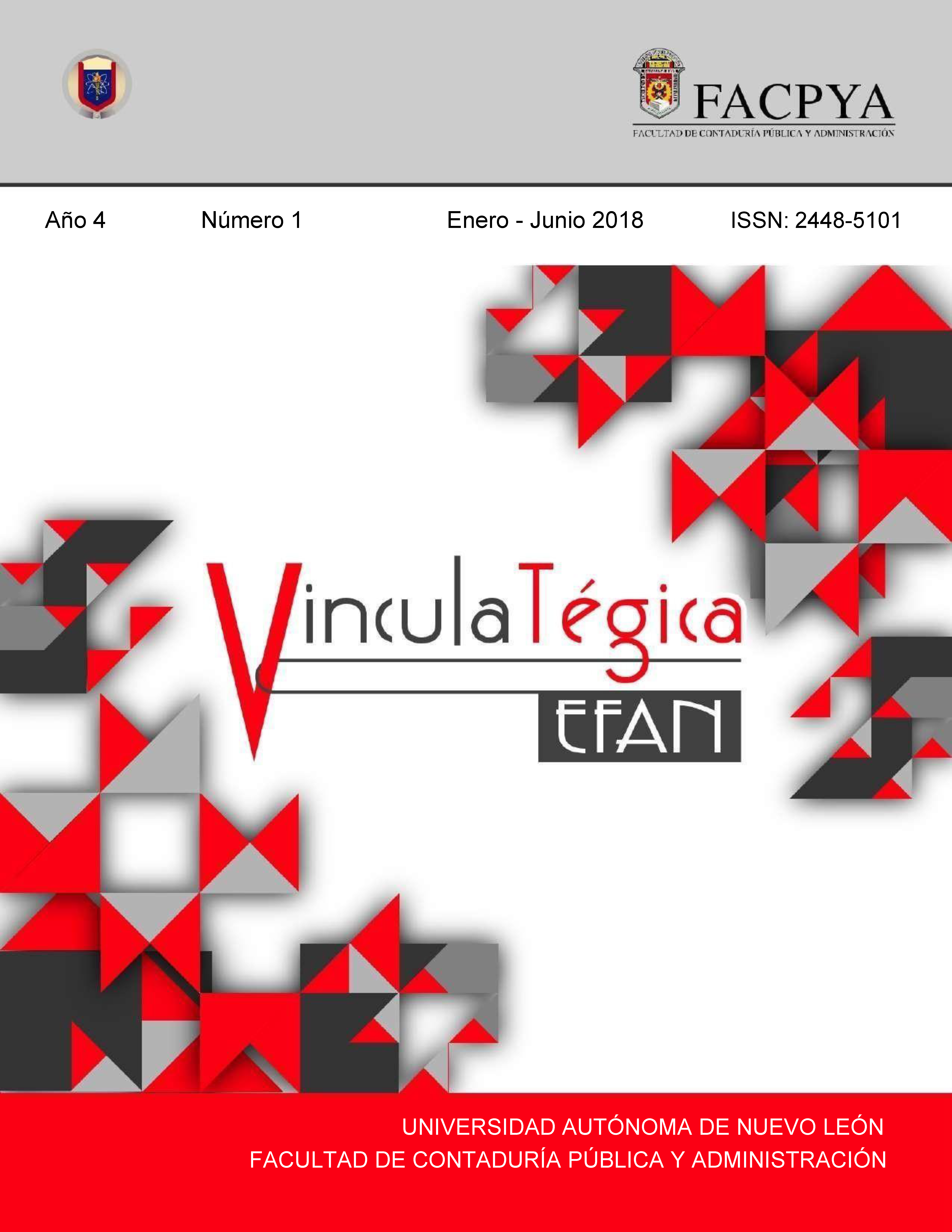Actividades extracurriculares como estrategia de emprendimiento social: estudio de caso FCA de la UAGro
DOI:
https://doi.org/10.29105/vtga4.1-778Keywords:
actividades extracurriculares, emprendimiento social, innovaciónAbstract
Universities that generate human capital have seen the need to evolve, change and redefine strategies that are involved in the common good. In this context they must go further and opt for a business vision: social entrepreneurship. However, the main weakness is the entrepreneurial culture, scarce entrepreneurial human capital and little support for the educational platform and innovation. Fortunately, weaknesses can be attacked from the university with their own resources, extracurricular activities play a transcendent role during their training. In this research, the literature was analyzed and the feasibility of extracurricular activities as a strategy was evaluated. The study was conducted at the Accounting and Administration School of the Autonomous University of Guerrero. The objective of this research is to demonstrate the strength of the human talent that students have towards social entrepreneurship.
Downloads
References
Choi, N., & Majumdar, S. (2014). Social entrepreneurship as an essentially contested concept: Opening a new avenue for systematic future research. Journal of Business Ventu- ring, 29(3), 363-376.
Dees, J.G (1998). The meaning of “social entrepreneurship”, Stanford University: Draft Report for the Kauffman Center for Entrepreneurial Leadership
Eccles, J., & Gootman, J. (2002). Community programs to promote youth developmente. Washington DC: National Aca- demy Press. Estrin, S., Mickiewicz, T., y Stephan, U. (2013). Entrepreneurship, social capital, and institutions: Social and commercial entrepreneurship across nations. Entrepreneurship theory and practice, 37(3), 479-504.
Gracia, E., & Herrero, J. (2006). La comunidad como fuente de apoyo social: evaluación e implicaciones en los ámbitos individual y comunitario. Revista Latinoamericana de Psicología, 38(2), 327-342.
Holland, A., & Andre, T. (1987). Participation in extracurricular activities in secondary school: What is known, what needs to be known? Review of Educational Research, 57, 4347-466.
INEGI (2017) Indicadores sociales, encuesta 2015. Recuperado de: http://www3.inegi.org.mx/sistemas/temas/Default.as px?s=est&c=26055&ent=12&e=12&t=1
IMCO (2016). Índice de Competitividad Estatal 2016. Recupera do de: http://imco.org.mx/indices/#!/un-puente-entre- dos-mexicos/capitulos/iniciales
Kantis H., Angelelli P. y Moori K. V.a (2008). Desarrollo Empren- dedor. América Latina y la experiencia internacional. Banco Mundial de Desarrollo, Nueva York USA.
Kantis, H., Federico, J., & Ibarra, S. (2014). Índice de Condicio- nes Sistémicas para el Emprendimiento Dinámico. Recu- perado de http;//www.unleashingIdeas.org.
Kliksberg, B. (2013). XV Congreso Mundial de Educación Com- parada. Buenos Aires: Télam, p. 25. Recuperado de: http://www.telam.com.ar/notas/201306/22458-kliks- berg-laeducacion-es-la-gran-lucha-que-tiene-quedar-el- mundo.php Landers, D., &
Landers, D. (1978). Socialization via interscholastic athletics: Its effects on delinquency. Sociology of Educa- tion, 51, 299-303
Marsh, H. (1992). Extracurricular activities: Beneficial extension of the traditional curriculum or subversion of academic goals? Journal of Educational Psychology, 84, 553-562
Mendoza Alcocer, Raúl (2017). Perspectivas económicas de Amé- rica Latina 2017- juventud, competencias y emprendi- miento. Resumen México OECD. Recuperado de http:// observatorio-social-economico-mexico.blogspot.mx/ 2017/01/
Miranda, R. M., y Silva, J. V. (2005). Emprendimiento juvenil: análisis de la percepción de existencia de capacidad empren- dedora a los estudiantes de primer año de la Facultad de Ciencias Económicas y Administrativas. Universidad Austral de Chile381
Moriana, J., Alós, F., Alcalá, R., Pino, M., Herruzo, J. y Ruiz, R. (2006). Actividades extraescolares y rendimiento acadé- mico en alumnos de educación secundaria. Electronic Journal of research in educational psychology, 4(8). Recuperado de http://dialnet.unirioja.es/servlet/articulo? codigo=1983608
Peredo, A. M., y McLean, M. (2006). Social entrepreneurship: A critical review of the concept. Journal of world business, 41(1), 56-65.
Pomerantz, G.M.(2003).The business of social entrepreneurship in a “down economy”. Revista Business
Gobierno del Estado de Guerrero 2015-2021. Plan Estatal de Desarrollo (2016). Recuperado de: http://i.guerrero.gob. mx/uploads/2016/04/Plan-Estatal-de-Desarrollo-2016- 2021.pdf
Sastre Castillo, M.A., Peris Ortiz, M., y Danvila del Valle, I. (2014). What is different about the profile of the social entrepreneur? Non Profit Management & Leadership (in press).
Shane, S. (2010). The promise of entrepreneurship as a field of re- search. Academy of management review. University of MclryIcrnd, 25(1), 217-226., Virginia, USA: Academy ol Managemenl fleview. Recuperado de: http:// entrepreneurscommunicate.pbworks.com/f/Shane% 2520%252B%2520Venkat%2520%2520Ent%2520as %2520field.pdf
Weerawardena, J., y Mort, G. S. (2006). Investigating social entrepreneurship: A multidimensional model. Journal of world business, 41(1), 21-35. Recuperado de http://seipa. edu.pl/s/p/artykuly/92/928/Social%20entrepreneurship %202006.pdf
Downloads
Published
How to Cite
Issue
Section
License

This work is licensed under a Creative Commons Attribution 4.0 International License.
a). Authors keep copyright and give the journal the right of the first publication of the work under a Creative Commons attribution license. This license allows others to share the work as long as original authorship and initial publication in this journal is acknowledged.
b). Authors may make other independent and additional contractual agreements for the non-exclusive distribution of the version of the article published in this journal (e.g., include it in an institutional repository or publish it in a book) as long as they clearly indicate that the work was published for the first time in this journal.







